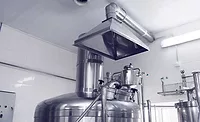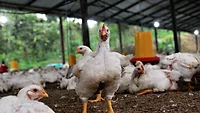Study Validates, Verifies Hydroxyl Radical Treatments for Inactivating Salmonella, Avian Pathogens on Poultry Eggs

Image credit: Myriams Fotos via Pexels
A new study published in Poultry Science has validated and verified a gas-phase hydroxyl radical process for inactivating Salmonella on hatchery eggs, addressing a significant source of Salmonella contamination throughout the supply chain. The project was authored by researchers from the University of Guelph and the University of Nottingham.
The contamination of hatchery eggs by Salmonella can result in Salmonella disseminating throughout a flock after hatching, establishing itself and leading to poultry meat contamination that can sicken consumers. The traditional egg disinfection method of choice, formaldehyde gas, can be hazardous to workers and generates toxic byproducts. Meanwhile, alternative disinfection methods like electrolyzed water, chlorine dioxide hydrogen peroxide, and ultraviolet (UV) light have limited efficacy and/or negative effects on hatchery rates. Therefore, an ideal method for pathogen inactivation on hatchery eggs is needed.
Gas-phase hydroxyl radicals have shown potential for inactivation of Salmonella on hatchery eggs while preserving the important, protective cuticle layer of the egg and maintaining hatchery rates. The aim of the present study was to build on prior research by developing a gas-phase hydroxyl radical process with enhanced microbial inactivation efficacy, and then to test the method in an animal trial to evaluate its effects on embryo and chick development in comparison to formaldehyde gas disinfection.
The hydroxyl radical process used by the researchers was based on UV-C light at 254 nanometers (nm) degradation of hydrogen peroxide vapor and ozone gas to produce antimicrobial hydroxyl radicals. For application to the eggs, the hydroxyl radicals concentrated at 2 percent volume over volume (v/v) with hydrogen peroxide were delivered as a mist, and 20 ppm parts-per-million (ppm) of ozone was administered within a continuous reactor containing UV-C lamps delivering a dose of 19 megajoules per square centimeter (mJ/cm2). The researchers sought to bolster the disinfection efficacy of the process through the inclusion of a photo-sensitizer, using riboflavin as the photo-sensitizing agent for the enhancement of UV-C light’s antimicrobial action, to support surface sterilization of egg surfaces.
To test the efficacy of the enhanced hydroxyl radical process, the researchers inoculated hatchery eggs with S. Enteritidis and S. Typhimurium; avian pathogens Escherichia coli, Enterococcus faecalis, and Pseudomonas aeruginosa; and Aspergillus niger spores. Inoculated eggs were exposed to both the gas-phased hydroxyl radical treatment and formaldehyde gas treatment, after which they were tested for the presence and quantity of microbial survivors. The eggs were also assessed for cuticle quality and inner membrane quality post-treatment.
In the egg inoculation trial, both the non-enhanced and enhanced hydroxyl radical treatments completely inactivated E. faecalis, E. coli, and Salmonella. P. aeruginosa was reduced by 4.3 log colony forming units (CFU)/egg with the non-enhanced treatment but were completely inactivated by the enhanced treatment. A. niger spores exhibited the highest tolerance to the hydroxyl radical treatments, but the enhanced treatment was significantly more effective than the non-enhanced treatment, decreasing the presence of A. niger by 3 log CFU/egg.
The non-enhanced hydroxyl radical treatment did not significantly affect the cuticle layer or inner membrane of the egg; however, the enhanced hydroxyl radical treatment and formaldehyde treatments did affect the cuticle layer. At the same time, the enhanced hydroxyl radical treatment did not significantly impact the inner membrane, even though it did diminish the cuticle layer.
Looking for quick answers on food safety topics?
Try Ask FSM, our new smart AI search tool.
Ask FSM →
In a separate animal trial, 200 eggs were collected within 48 hours of laying from the University of Guelph Arkell Research Station Poultry Unit. The eggs were separated into four groups that received different treatments: a non-treated control, the enhanced and non-enhanced hydroxyl radical treatments, and the formaldehyde treatment. After 21 days of incubation, the eggs were removed from the incubator and the hatch rate was observed. Hatched chicks were then monitored and inspected for health and behavior for 40 days. The trials showed no negative effects of any of the three treatments on embryo development and hatchery rate, nor on chick development.
Overall, the study validated and verified the two different gas-phase hydroxyl radical treatments—the non-enhanced treatment for the inactivation of E. faecalis, E. coli, and Salmonella while reducing P. aeruginosa and retaining the cuticle layer; and the enhanced treatment for the surface sterilization of eggs at the expense of the cuticle layer. Regardless, neither treatment showed a negative effect on embryo development or growth of hatched chicks, rendering hydroxyl radical treatment a viable alternative to formaldehyde in reducing Salmonella and avian pathogens on hatchery eggs.









